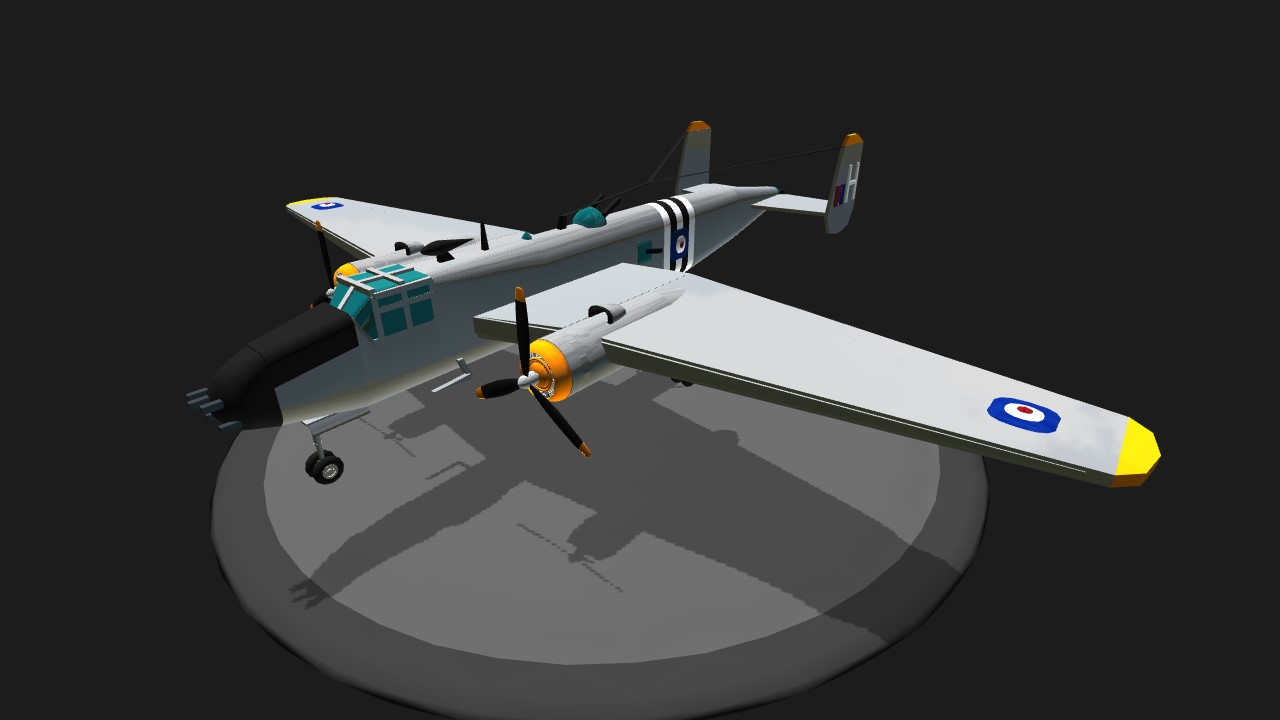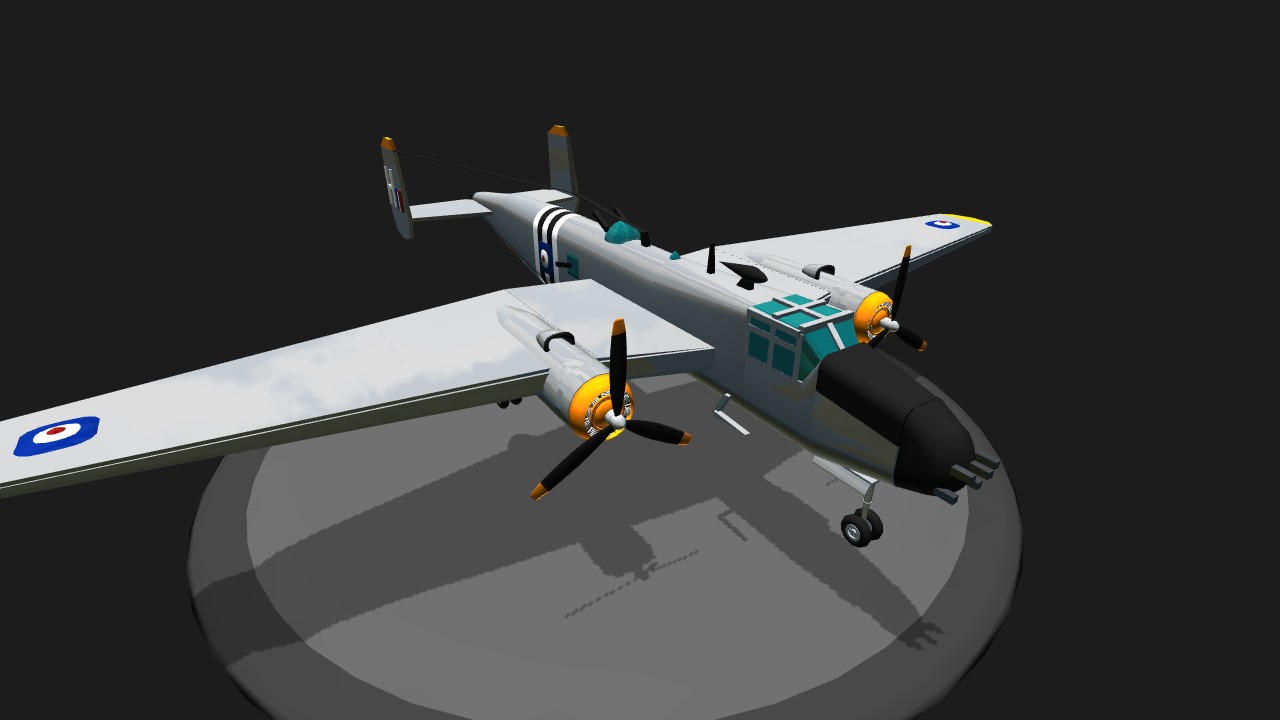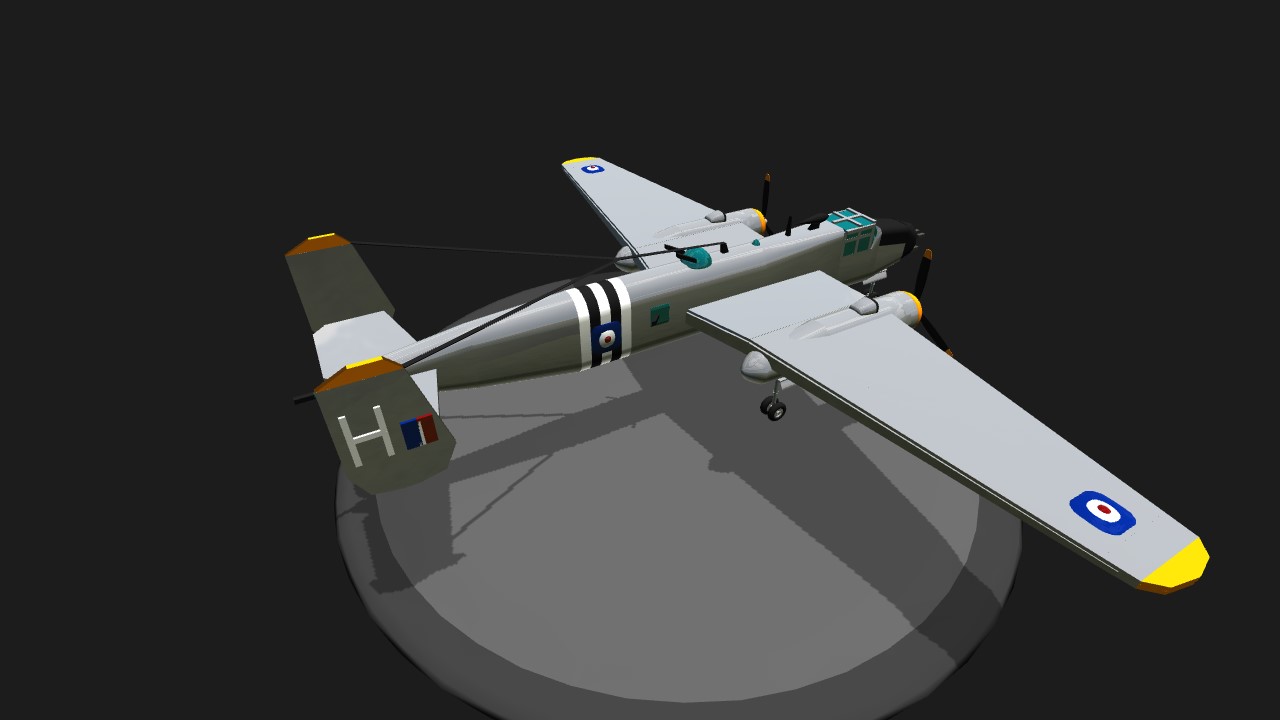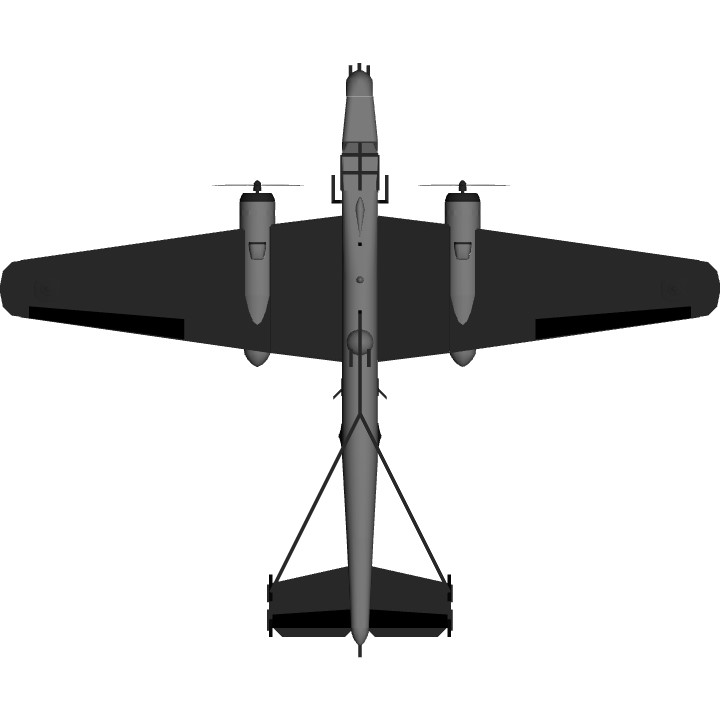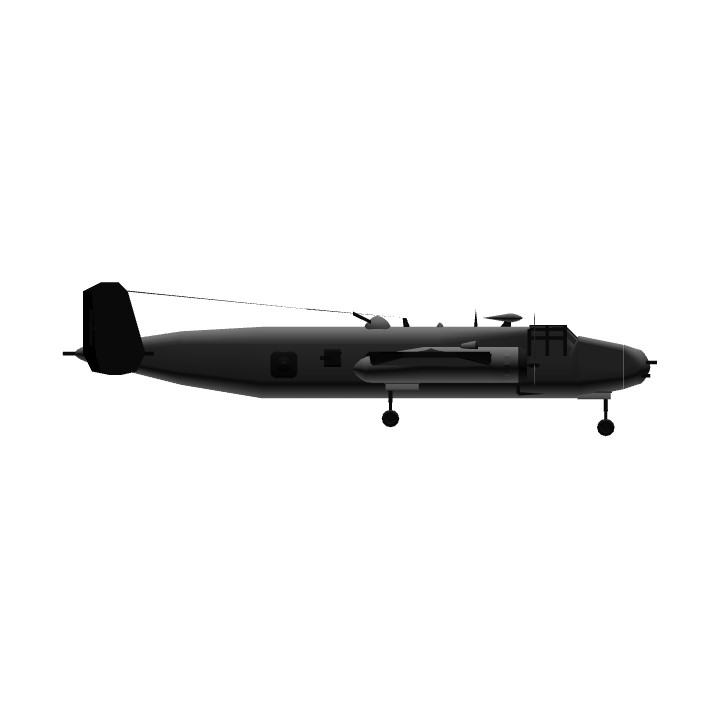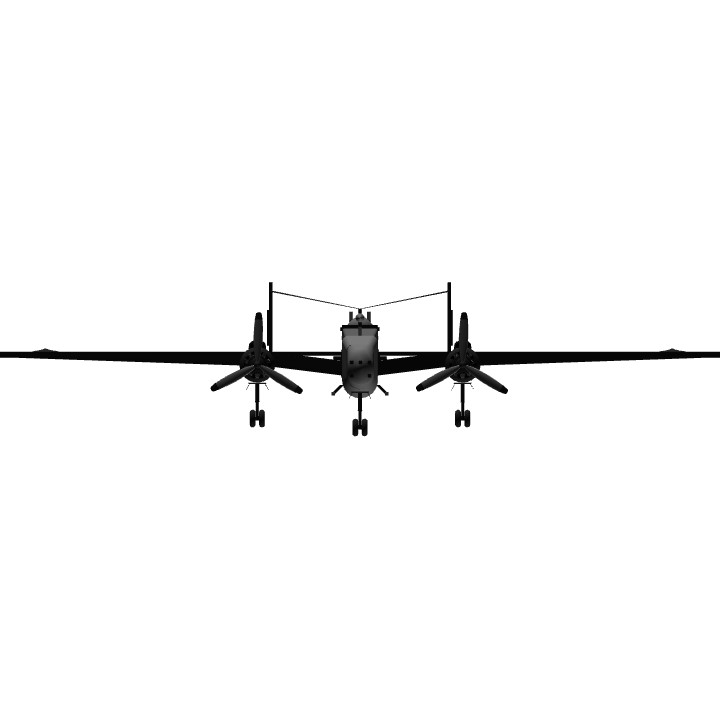The B-25G (NA-96) was the first version of the Mitchell to introduce the 75-mm cannon. It was intended for use in anti-shipping strikes in the South Pacific.
In the B-25G, a standard 75-mm Army M4 cannon was mounted to fire forward through the nose. This gun was a revision of the famous French 75 of World War I. The basic concept had been found to be feasible via a series of experiments on a converted Douglas B-18A Bolo. However, since the effects of the heavy muzzle blast on the nose structure of the Mitchell were unknown, a complete forward fuselage section was built and trucked to a secret area in California where firing tests could be conducted out of the way of prying eyes. Guided by these tests, the structure was progressively strengthened until full resistance to prolonged firing of 75-mm rounds could be demonstrated.
B-25C-1 serial number 41-13296 was modified as the XB-25G prototype. It was fitted with a 75-mm M4 cannon which was 9 feet 6 inches long. The bombardier-equipped transparent nose was replaced with a shortened armored solid nose that reduced overall length to 51 feet. The cannon was mounted in a cradle in the lower left-hand side of the nose. The cradle extended underneath the pilot's seat and a spring mechanism formed part of the gun mounting to take up the 21-inch recoil.
The modified aircraft made its initial flight on October 2, 1942, test pilot Ed Virgin being at the controls and with test engineer Paul Brewer being on board. Because of the additional weight and drag, maximum speed fell to 278 mph. However, flight tests found the stall characteristics to be normal and diving at speeds of up to 340 mph revealed no problems.
Five more B-25Cs were converted to B-25G standards, and 400 examples of the B-25G were built new at Inglewood in -1, -5, and -10 production blocks. 58 B-25C-20 and -25 bombers were modified with solid nose, two nose guns and 75-mm cannon and were redesignated B-25G.
Up to the end of the Second World War, the 75-mm cannon of the B-25G was the second largest gun fitted to any aircraft, exceeded in size only by the 105-mm cannon fitted experimentally to the Piaggio P.108A. However, the firepower of the B-25G's 75-mm cannon has been exceeded in postwar years by the 105-mm howitzer carried by the Lockheed AC-130 Spectre gunship
The 75-mm cannon was augmented by two 0.50-inch Browning machine guns mounted side-by-side in the nose. These guns were to be aimed and fired by the pilot at the same time as the cannon. The machine guns were intended to be used as anti-flak weapons and for ranging purposes in the sighting of the 75-mm cannon. Both the cannon and the nose guns were aimed by a type N-3B optical gunsight with a type A-1 combination gun/bomb sight head mounted on the pilot's side of the cockpit. This unit was also used for minimum altitude bombing.
Rather than incur the extra weight, high cost, and protracted development schedule of an autoloader, the 75-mm rounds were manually loaded into the cannon by the navigator/cannoneer. Each shell weighed 15 pounds, and 21 rounds of 75-mm ammunition could be carried on a rack next to the breech of the cannon. On production aircraft, this rack was protected by armor plate on three sides.
Aft of the nose, the B-25G had the same armament as the B-25C. The upper dorsal turret was retained, but the retractable ventral turret was often deleted since hydraulic fluid and dust tended to obscure its sighting system. The lower turret was deleted on the B-25G production line effective with serial number 42-65001. The standard bomb bay was retained, but was modified to permit the installation of a standard aircraft torpedo.
The crew of the B-25G was five--pilot, copilot, navigator/cannoneer, upper turret gunner, and radio operator. Since there was no bombardier, the pilot fired the nose armament and released the bombs. The radio operator also doubled as the ventral turret gunner when this turret was fitted. Additional armor was fitted forward of the instrument panel, forward of the loader's station, around the 75-mm ammunition rack, and below the windshield. An external flak plate was fitted below the cockpit on the left hand side of the aircraft.
The first B-25Gs to be delivered to the Southwest Pacific began arriving at Brisbane in July of 1943. The B-25Gs used their heavy cannon against flak positions, shipping, and other targets, especially during the New Britain campaign in which 1253 rounds of 75-mm cannon ammunition were expended in 36 days. The cannon proved to be an effective weapon against barges, freighters and small craft, and a single well-placed hit could inflict considerable damage even to a destroyer. However, the muzzle velocity of 1930 feet per second gave it a relatively high trajectory, which made accurate range determination critical. In addition, accurate aiming demanded a straight run in to the target, increasing vulnerability to enemy fire. The cannon was accurate, but it was generally impossible to fire any more than four shells in each attack, during which time the Mitchell was extremely vulnerable to ground fire since no evasive action could be taken.
B-25Gs were used to a limited extent in the Mediterranean theatre of operations, but strong German fighter opposition and much heavier anti-aircraft fire tended not to justify the relatively high risks to the attacking crews.
The supplementary forward-firing machine gun armament of the B-25G was considered to be inadequate, and Major Paul "Pappy" Gunn of "strafer" fame strongly recommended adding two more nose guns and providing four more guns in blister packs mounted on the fuselage sides. Modification to existing B-25Gs were made at the Townsville Field Modification Center in Australia, where some of the earlier B-25Cs and Ds had been converted for ground strafing. During field tests, the blast during the firing of the blister guns was found to cause extensive skin fractures in the adjacent structure. The fuselage structure was reinforced and inspection panels were added to the wing center section. Numerous B-25Gs were also provided in the field with a twin 0.50-inch tail turret installed to counterbalance the additional weight of the extra 0.50-inch guns mounted in the nose and on the e fuselage sides, and a single gun was mounted at the right and left waist stations.
By the time of the Marshalls campaign of early 1944, worthwhile targets for the 75-mm cannon had become scarce. By this time, there were fewer targets that could not be dealt with more effectively by machine guns or bombs. Consequently, the big cannon was often removed from the B-25G, with a pair of additional 0.50-inch machine guns being fitted in the nose tunnel where the cannon had been located. A total of 82 B-25Gs were so modified at the Townsville Depot by April of 1944.
Two B-25Gs (FR208 and FR209) were supplied to the Royal Air Force for evaluation purposes. However, they never reached operational service.
A few B-25Gs reached the Navy as PBJ-1G.
Specification of the North American B-25G Mitchell:
Engines: Two Wright R-2600-13 Double Cyclone fourteen-cylinder air-cooled radials, rated at 1700 hp each for takeoff and 1500 hp at 2400 rpm. Equipped with Holley 1685HA carburetors. Performance: Maximum speed 280 mph at 15,000 feet. Weights: 19,200 pounds empty, 35,000 pounds maximum loaded. Dimensions: Wingspan 67 feet 6.7 inches, length 50 feet 10 inches, height 16 feet 4.2 inches, wing area 610 square feet. Fuel: The fuel capacity consisted of four tanks in the inner wing panels, with a total capacity of 670 US gallons. In addition, a 515-gallon tank could be installed in the bomb bay for ferrying purposes, bringing total fuel capacity to 1255 US gallons. Later versions had additional auxiliary fuel tanks in the outer wing panels. Later versions could also have 125-gallon tanks fitted in side waist positions, a 215-gallon self-sealing fuel tank installed in the bomb bay, and provisions could be made for a droppable 335-gallon metal bomb-bay fuel tank. Armament: One 75-mm M4 cannon in nose with 21 rounds. Two fixed 0.50-inch machine guns in the nose with 400 rpg. Two 0.50-inch machine guns in top turret, 400 rpg. Two 0.50-inch machine guns in retractable ventral turret, 350 rpg. This turret was deleted effective on B-25G No. 42-65001. Normal internal bombload was 3000 pounds
Specifications
General Characteristics
- Successors 2 airplane(s) +35 bonus
- Created On iOS
- Wingspan 66.1ft (20.2m)
- Length 54.3ft (16.6m)
- Height 14.0ft (4.3m)
- Empty Weight 7,991lbs (3,625kg)
- Loaded Weight 34,213lbs (15,518kg)
Performance
- Power/Weight Ratio 0.098
- Horse Power/Weight Ratio 0.116
- Wing Loading 24.5lbs/ft2 (119.6kg/m2)
- Wing Area 1,396.3ft2 (129.7m2)
- Drag Points 5233
Parts
- Number of Parts 176
- Control Surfaces 8
- Performance Cost 718
- Log in to leave a comment
-
16.2k LordofLegoCool10.3 years ago
-
78.1k Cedy117@VikDesigns i thimk i misspelled your name lol10.3 years ago
-
78.1k Cedy117Lol thanks for all the ratings i thought you where going to be gone for a lot longer lol ill check out your new plane tomorrow it looks realy cool my phone will be repaired tomorrow then i can finish my current build to be honest i needed a small brake from sp too ive been at it straight for a long time so i slowed down my pace so i can focus more on better scaleing flight characteristics and i think ill be doing alot more coustom planes because there alot more fun to me sorry about this massive comment @VikDesigns lol but its awsome your back!10.3 years ago
-
0 LancasterboyHow do I get the Kamcard free?10.3 years ago
-
46.8k JMicah4@thumseybomber next week is what i herd.10.3 years ago
-
615 thumseybomberWhen is that update?! 😈😈 I need this thing! Please understand!10.3 years ago
-
9,382 FlOuI can't trust my eyes.10.3 years ago
-
2,838 corey1324Noice10.3 years ago
-
6,654 mattmck@Cedy117 that blows10.3 years ago
-
78.1k Cedy117Ohh that sucks some times I can't download certain planes must be your device works for me @mattmck10.3 years ago
-
6,654 mattmcki cant download it10.3 years ago
-
6,654 mattmckdaaanngggg10.3 years ago
-
7,745 tominatorJesus that's a long description!!! Absolute perfection though!10.3 years ago
-
78.1k Cedy117Thank you @ JoeAdkinson1310.3 years ago
-
39.6k JoeAdkinson13Excellent work10.3 years ago
-
78.1k Cedy117Thanks @SeriousFlipper410.3 years ago
-
78.1k Cedy117Thanks guys glad you like it @AndrewGerrison @JacobHardy64 @mixhaelr10.3 years ago
-
5,694 SeriousFlipper4Fantastic10.3 years ago
-
2,647 mixhaelrlooks great!10.3 years ago
-
25.2k JacobHardy64YES its out!10.3 years ago

